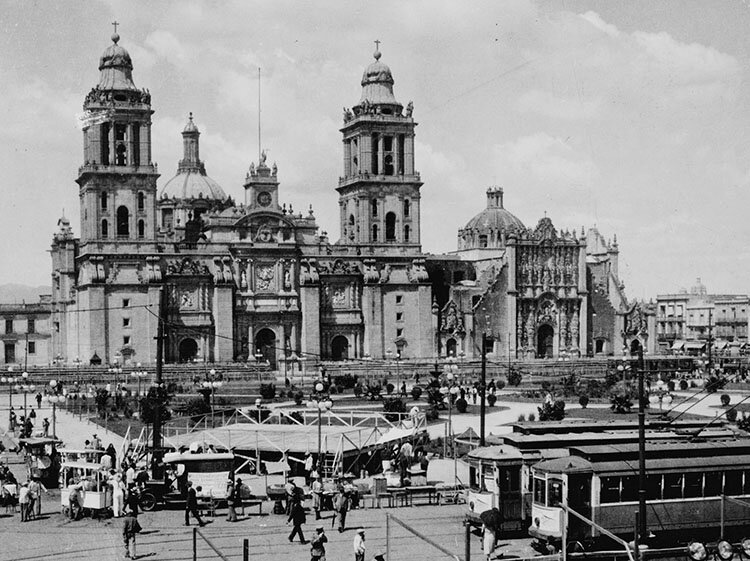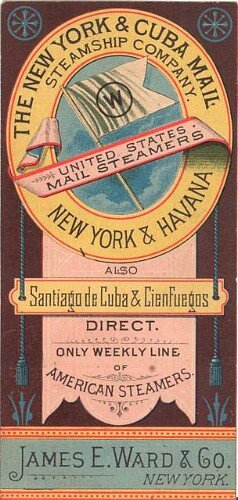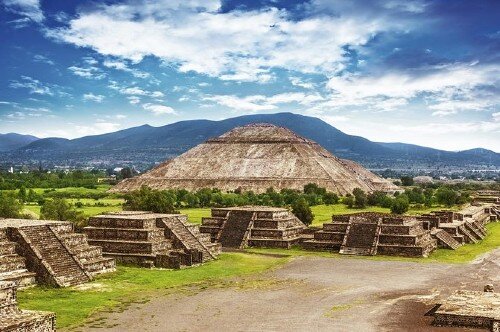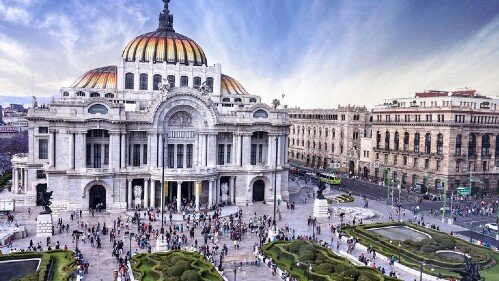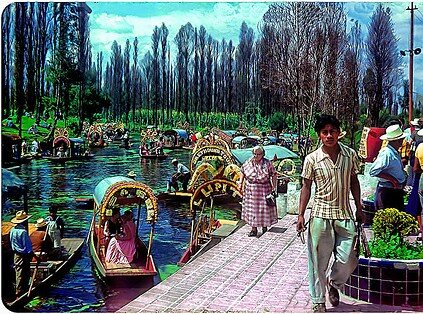Ep. 6: Falling in Love: Mexico City and Louis Stephens
Annette was restless. After meeting the Mexican muralists, Mexico was calling her name.
Having met Rivera, Orozco, and Siqueiros and been excited by their murals in the United States, Annette must have been dying to see them again and to explore their exotic world. No doubt the idea for her and Sidney to vacation in Mexico City in the summer of 1935 was her idea. Professional men of the era like Sidney preferred Europe—Paris, London, Rome—and not the grit of developing countries.
With no commercial flights to Mexico City available, they chose to travel on the popular SS Oriente, a Ward ocean liner, departing from New York, with a stop in Havana, and disembarking in Veracruz, Mexico’s port of entry. They traveled First Class, enjoyed luxurious accommodations, and “smooth as glass” weather. The days at sea were idyllic and warm, with a bracing breeze off the sea.
They stopped first in Havana. “It was magnificent in those days,” Annette said in a later interview, “the music, the people—their joy was so contagious and fascinating! We didn’t see poverty. We saw happy people, dancing, and wonderful food. I had my first frozen daiquiri—although I never could drink much—but it was so delicious you didn’t even feel there was any alcohol in it!”
From Veracruz travelers took day or night trains up to Mexico City. A mutual friend had given Annette and Sidney the name of a special friend, Louis Stephens, who worked in Mexico. Annette thought him a “brilliant personality who loved Mexico and spoke beautiful Spanish.”
Stephens offered to take time from work and show them what Mexico had to offer. Immediately he and Annette were attracted to one another. Here was a man more to Annette’s taste than her husband, who she admired and thought quite intelligent but who didn’t excite her.
Mexico City in 1935 could not have been a more provocative environment to coalesce all Annette’s longings and dreams of adventure. Romance frosted the cake.
As a site of population, Mexico City dates back to prehistoric times, to brutal and exotic legends of Aztec rituals and art forms. King Phillip of Spain dictated its present, more modern appearance when the Spaniards conquered the old city of Tenochtitlan, crushing it into rubble and superimposing a new regime. In subsequent centuries, churrigueresque architecture prevailed and, during Annette’s first visit, still dominated the cityscape. A grand, baroque Catedral Metropolitana looms over the vast, stone-lined plaza, the Zócalo, and a multitude of public buildings date back to the sixteenth century—ornate, elaborate edifices designed in size and grandeur to proclaim the dominance of the Spanish kingdom in the new world.
As Carlos Fuentes has written, Mexico City is a true palimpsest—and its ancient history can never be entirely erased. It lingers in the air like the whisper of a marvelous tale. The streets are cobble-stoned and tree-lined and, early each morning, shopkeepers scrub down the sidewalks, preparing for another busy day. As the morning wears on, everywhere there is a hustle and bustle of unusual sights: myriads of blossoms scent the air at the flower market near the cathedral; brown-skinned, mischievous urchins in bare feet dart and weave through the crowd; sombreroed men accompanied by women wrapped in rebozos with babies on their back stagger under huge stacks of wares brought to market; troops of white-clothed peons from the country flock into the city; groups of foreigners gather for coffee at tables under shaded porticos to do business, enjoy the view, bicker, swap lies, and dream impossible dreams; walls are plastered with posters announcing upcoming bull fights and lottery-ticket hawkers roam the streets; burdened donkeys trail listlessly under massive loads, mixing with buses, cars, and street cars; and pedestrians jaywalk at will.
On the south side of the plaza is a section known as the old flower market from the days when Indians still canoed through canals to reach it. In 1935, radios squawk and luxury cars motor by. For sale are toys, sweets, newspapers, jewelry, assorted hardware and dishes, eyeglasses, postcards, and other collections of oddities. Workmen mend clocks and musical instruments, women tell fortunes with canaries or crickets in bamboo cages. Travelers arrive from around the world, some to stay, some to visit, to study, to walk on the wild side.
Further out in the Valley of Mexico there lie the ruins of a people dating back before the Aztecs—the pyramids and temples of Teotihuacán. Annette must have stood atop the Pyramid of the Sun and imagined life in that ancient time—there is certainly nothing like it in New York City. There is room here in this country for vivid imaginings, for the possible realization of fantasies. To a young artist feeling too confined by others’ expectations, trapped in an unhappy marriage and yearning for new horizons, Mexico City in 1935 must have seemed a beckoning paradise.
Sidney, Annette, and Louis Stephens toured around together, and Mexico enthralled Annette. She thrilled to the sights, the history, the people whose expressive faces reflected their ancient heritage, the smell of roasting chilies in the air—and to the warmth and sexual electricity she felt around Stephens. He seemed quite interested in her immediately and she felt the same. They were often on the same wave length, noticing and enjoying the same sights, while Sidney lacked their enthusiasm for the exotic, often saying the same things “could be seen at the Piggly Wiggly at home.”
The trip had most likely soured for Sidney anyway as he must have been aware of his wife’s attraction to the handsome, physically compelling Stephens. The final blow of fate’s sword fell when, a couple of nights before they were to depart for home, they ate in a local restaurant. Although later he would claim in court that Stephens had “poisoned him to make an opportunity to be alone with Annette,” Sidney very soon became quite ill, most probably from “Montezuma’s revenge,” and had to spend the remainder of their stay in the hotel.
This left Annette and Stephens alone for the next two days, time to explore what they were feeling, to bond, for both of them to fall in love. They made plans to stay in touch and, hopefully, to be together again.


